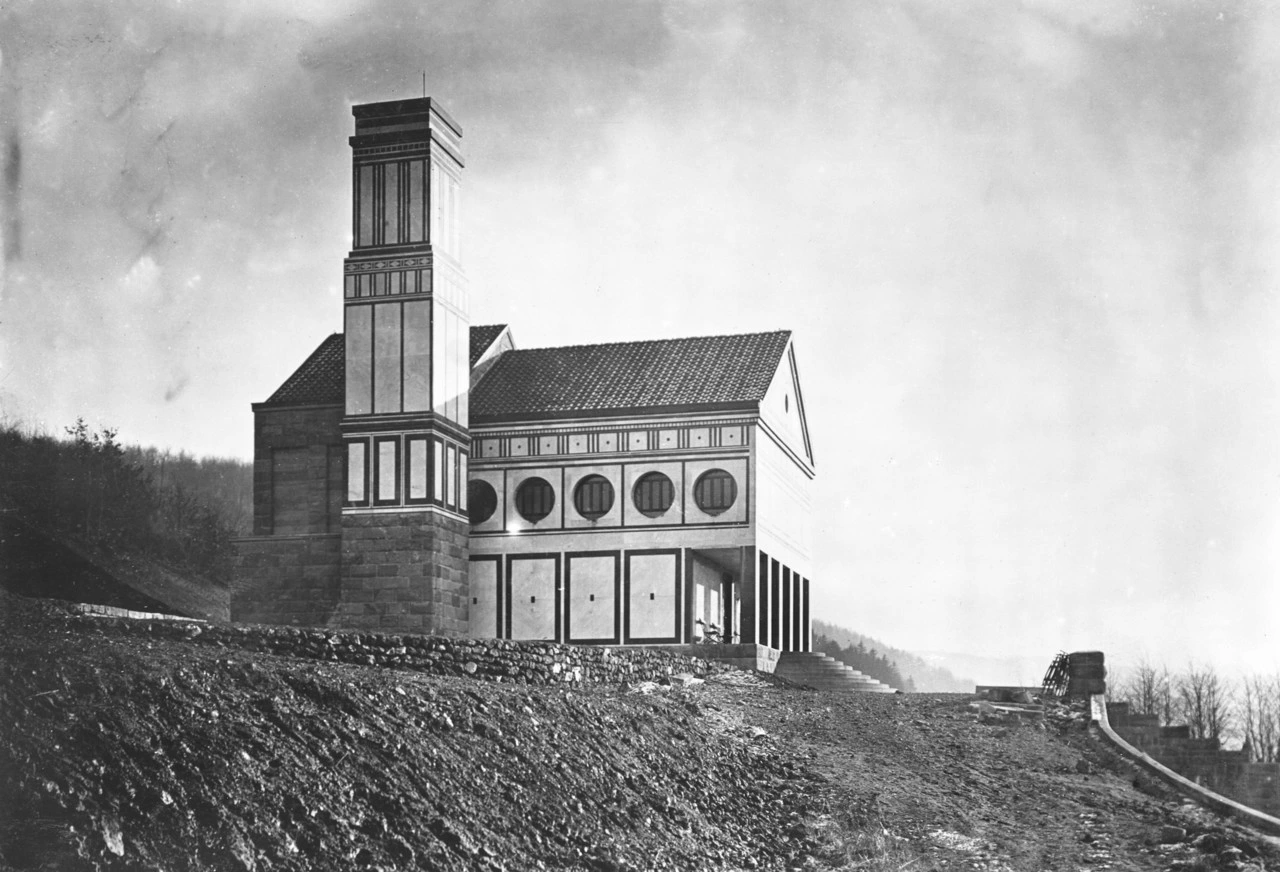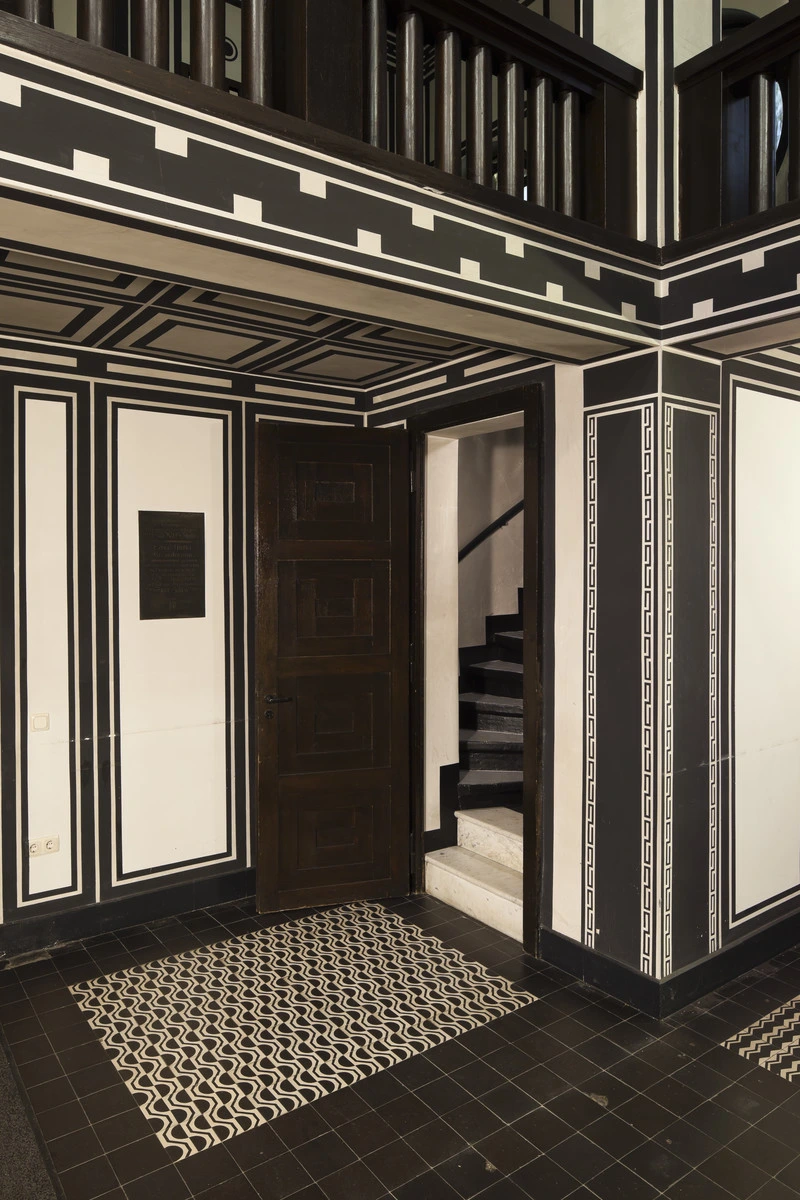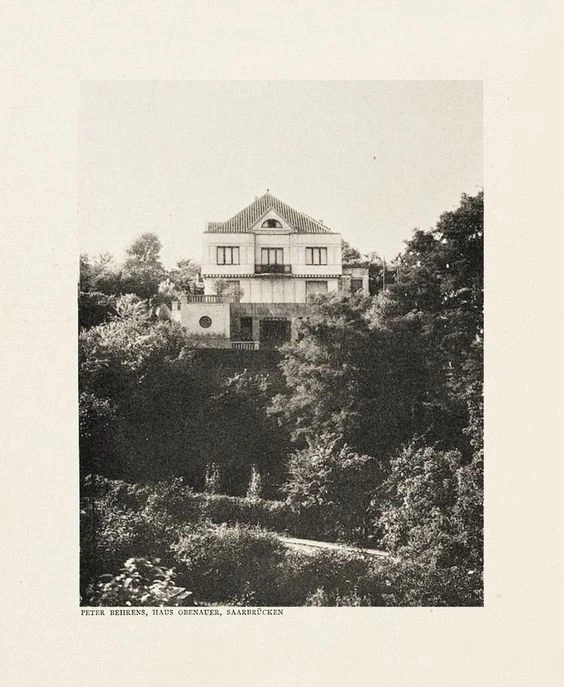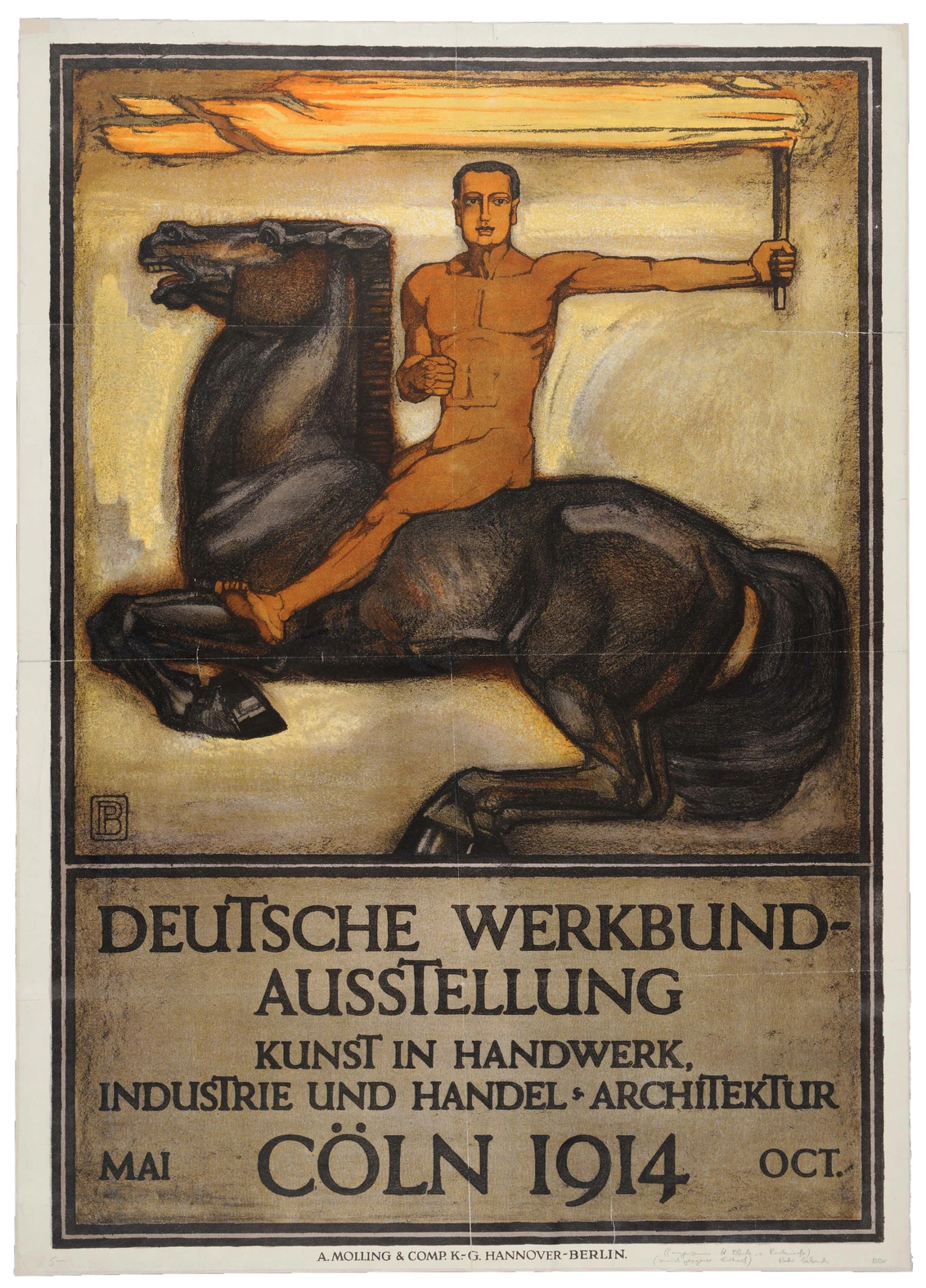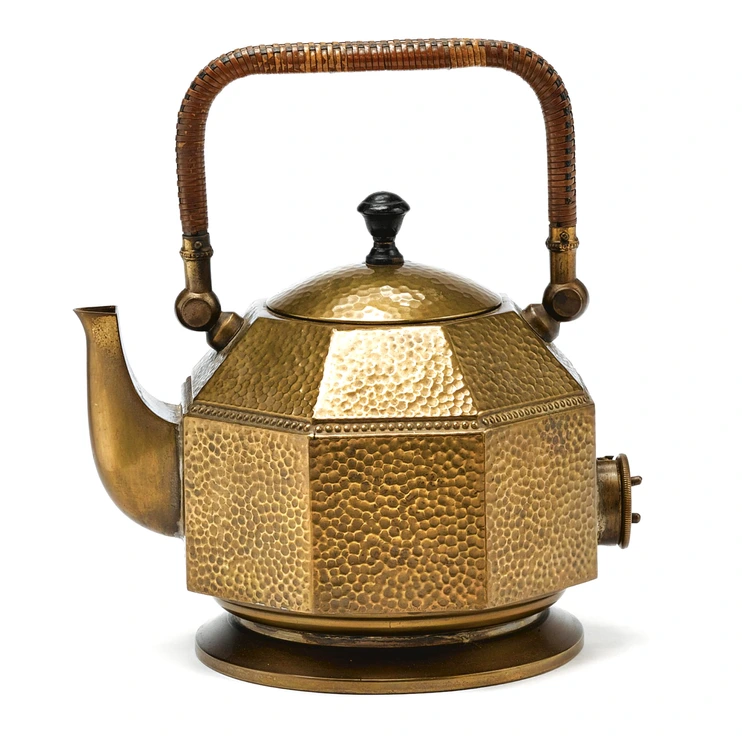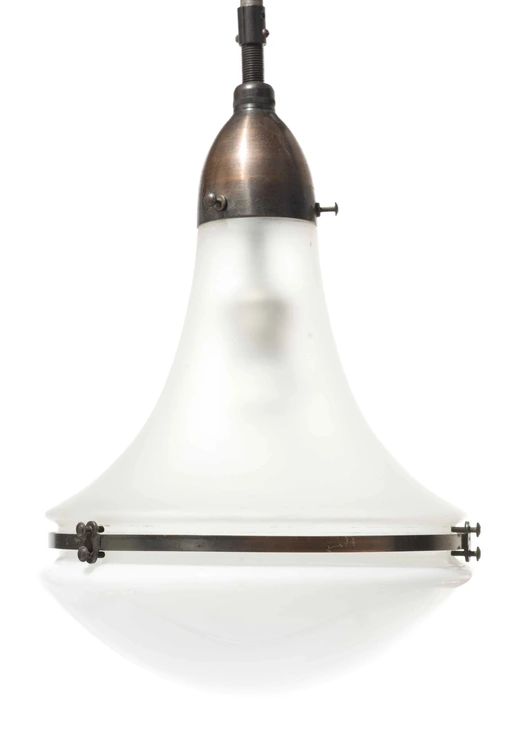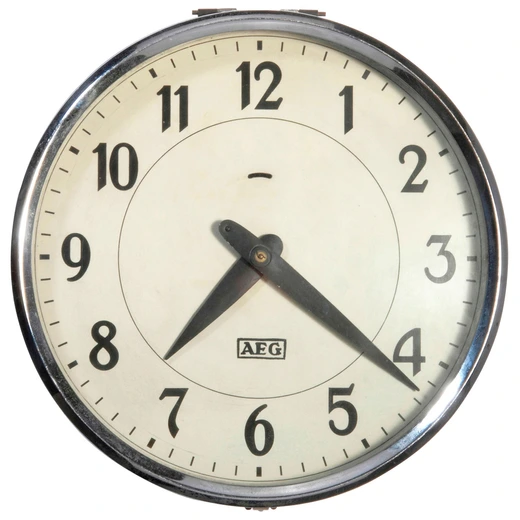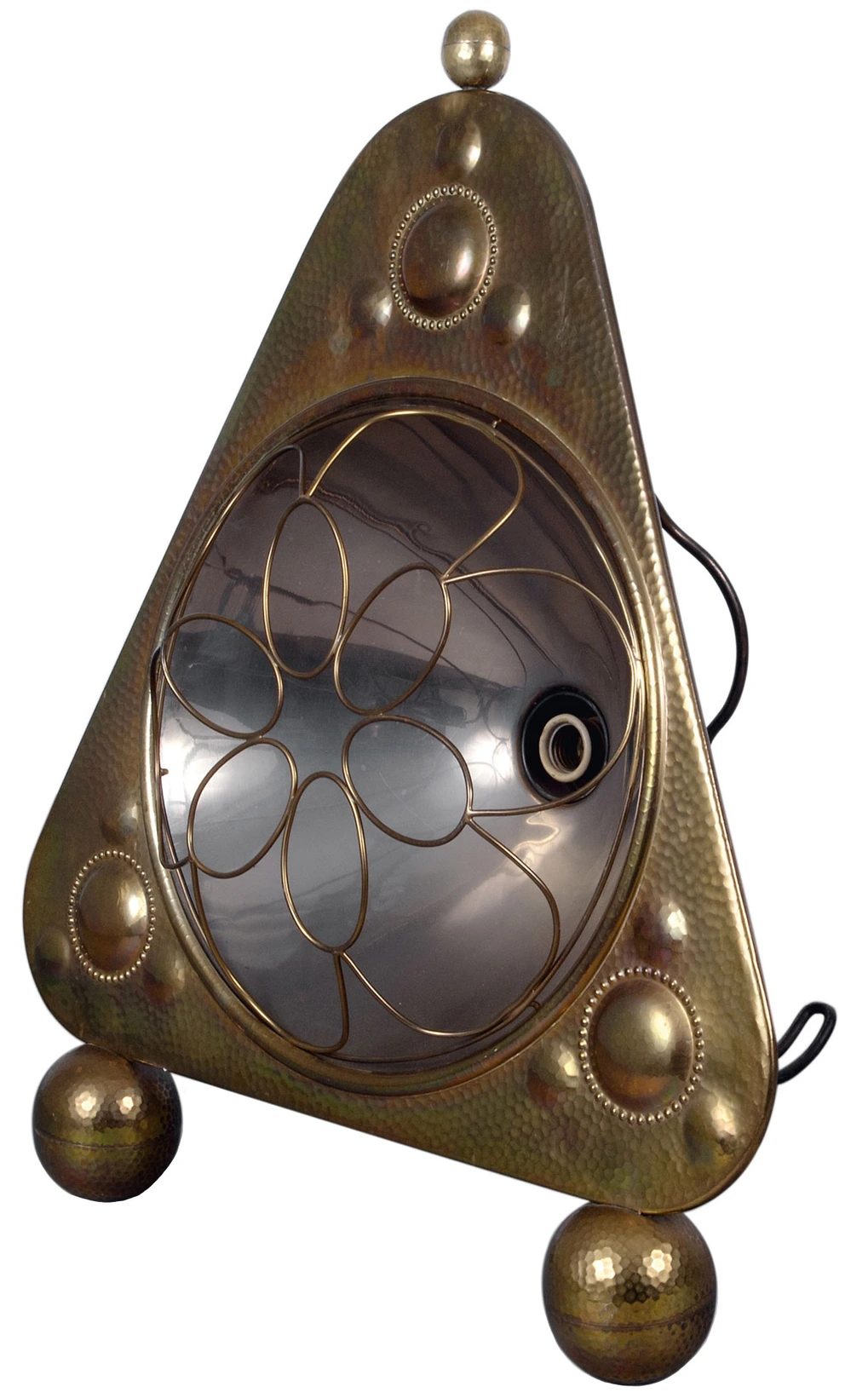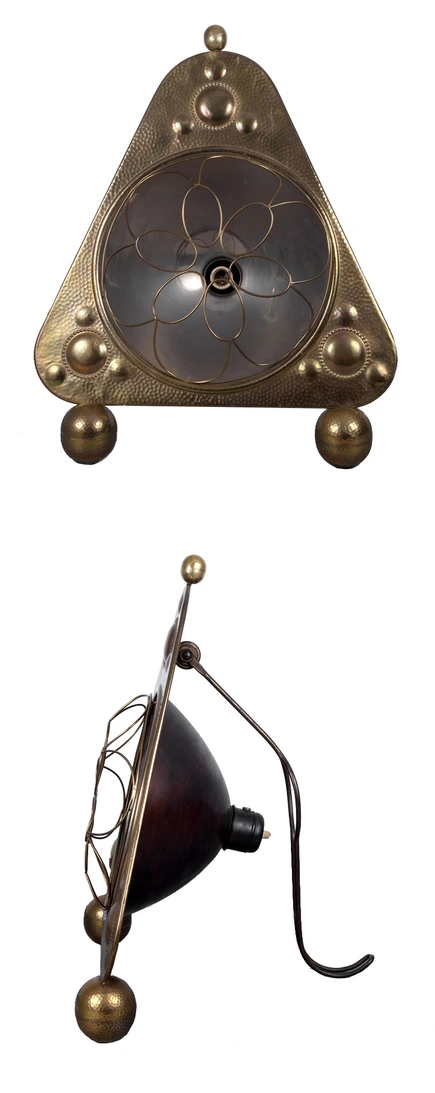
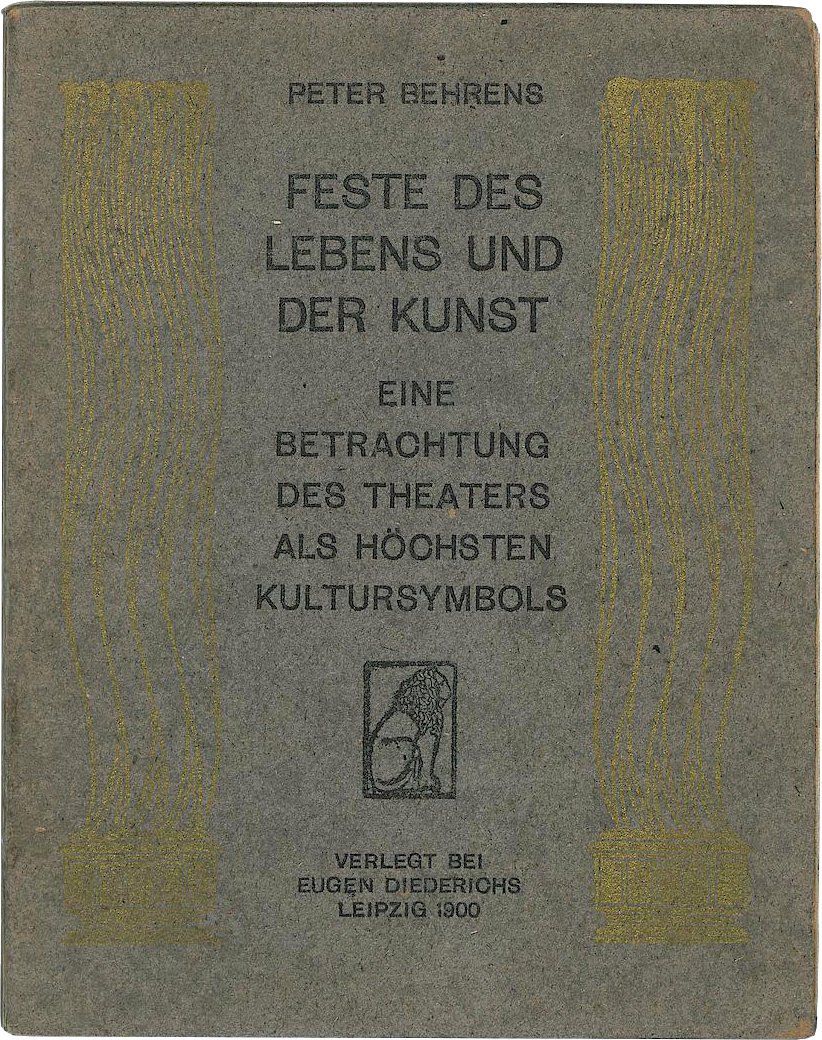

I
n 1899 peter behrens joined the darmstadt artists’ colony on the Mathildenhohe. The colony was the creation of grand duke ernst-
ludwig hesse, whose family still retained some claim to sovereignty in Hesse, of which Darmstadt was the capital.
ernst-ludwig’s plan was to create a village
exclusively of artists, whose every house, and everything in them, would be beautiful. The artists, including behrens, were chosen and invited by ernst-ludwig. The colony formally opened in 1901 with an exhibition called a document of german art. The subject of the exhibition was the village itself and the eight houses furnished by the resident artists. The houses were open to the public. All the houses but one
were the work of joseph maria olbrich, the Viennese architect. The eighth was designed by peter behrens. It was his first building.
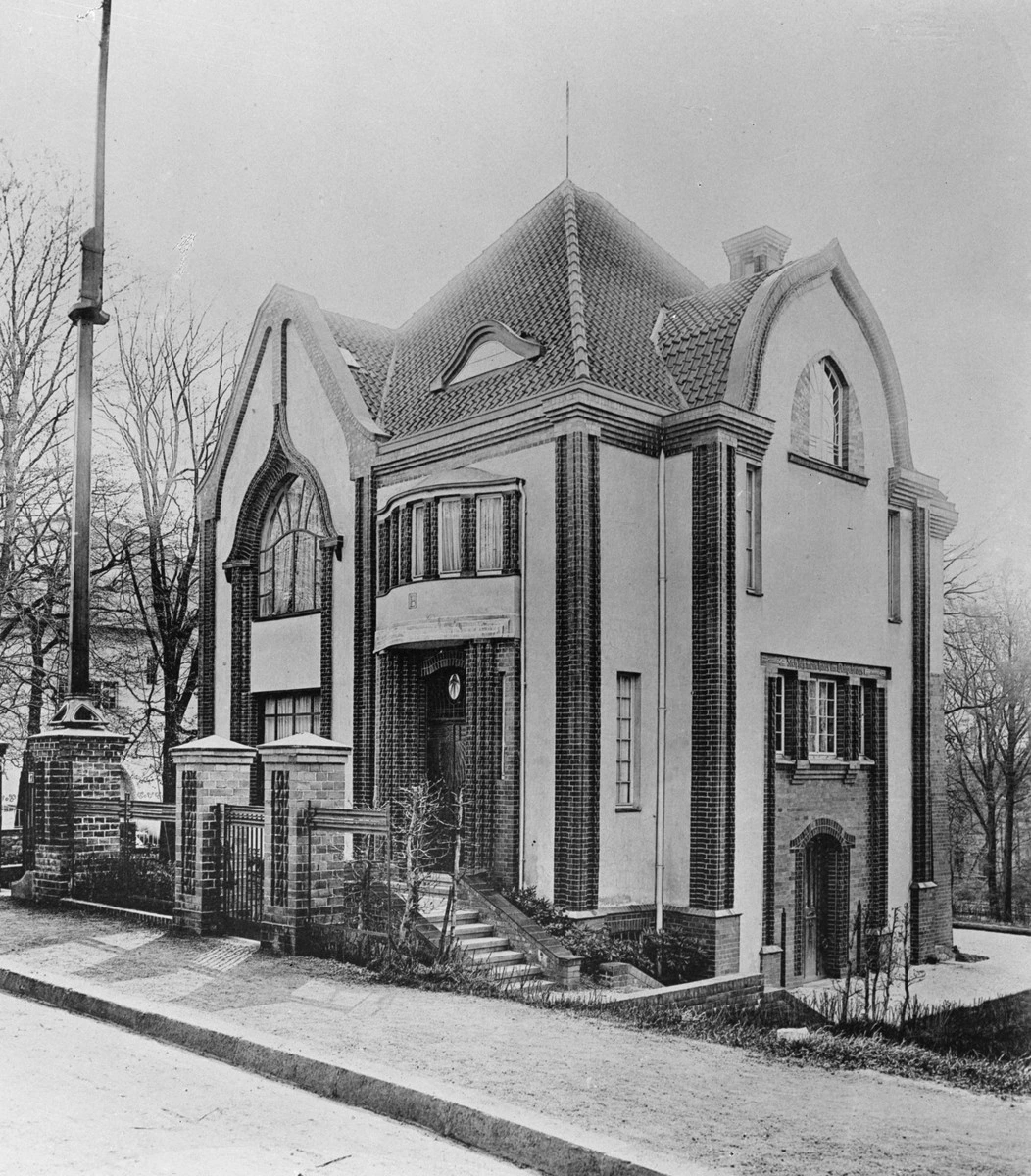
The interior of the behrens’ house was lavish,
with everything in it—furniture, rugs, dishes,
silverware, candelabra, carved doors, ceiling
reliefs, mosaic floors and textiles—executed to the artist’s drawings. The total cost came to about 200,000 marks. It was the most expensive of the eight house-projects in the colony.
Behrens House in Darmstadt, Germany, designed by peter
behrens, 1901. Photo courtesy of Bildarchiv Foto Marburg
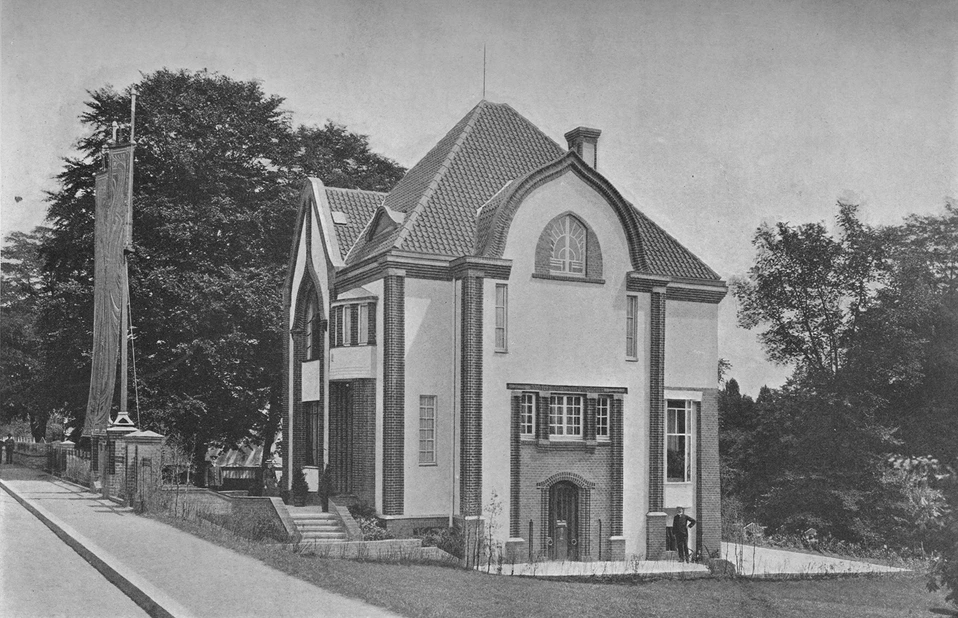
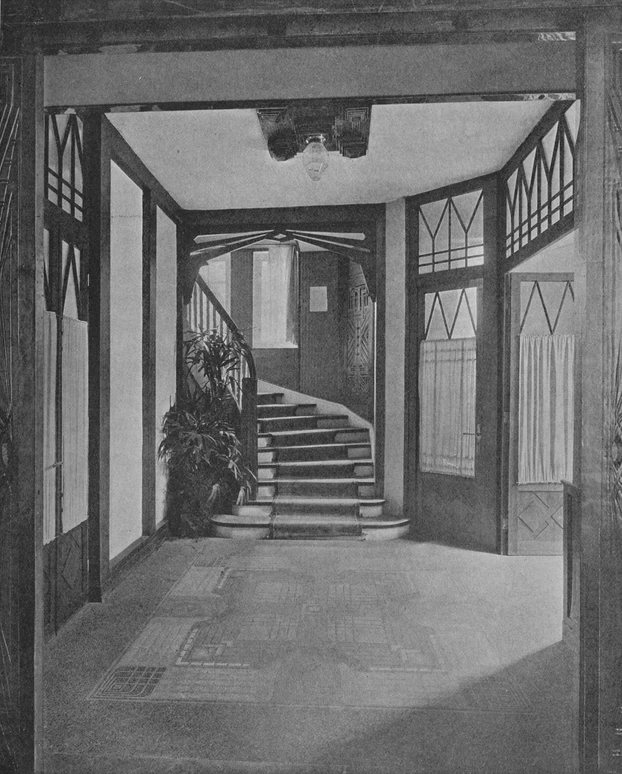
Behrens House, designed by
peter behrens, 1901. © Getty Images
The floor and staircase of Behrens House,
designed by peter behrens, 1901. © Getty Images
The house has not been preserved, but we know
what it was like from the January 1902 edition (No. 11) of a Darmstadt periodical, deutsche kunst und dekoration. The entire number was devoted to the artists’ colony on Mathildenhohe and featured a 63-page, specially titled section on the behrens’ house that was set in a special typeface. It is likely that behrens set the pages himself. In any case, he designed the typeface and ornaments. Some objects from the home are in museums, and some still turn up at auctions. Some furnishings and details may have
been reproduced later (for other exhibitions, for example), but no later reproductions for sale are known to me.
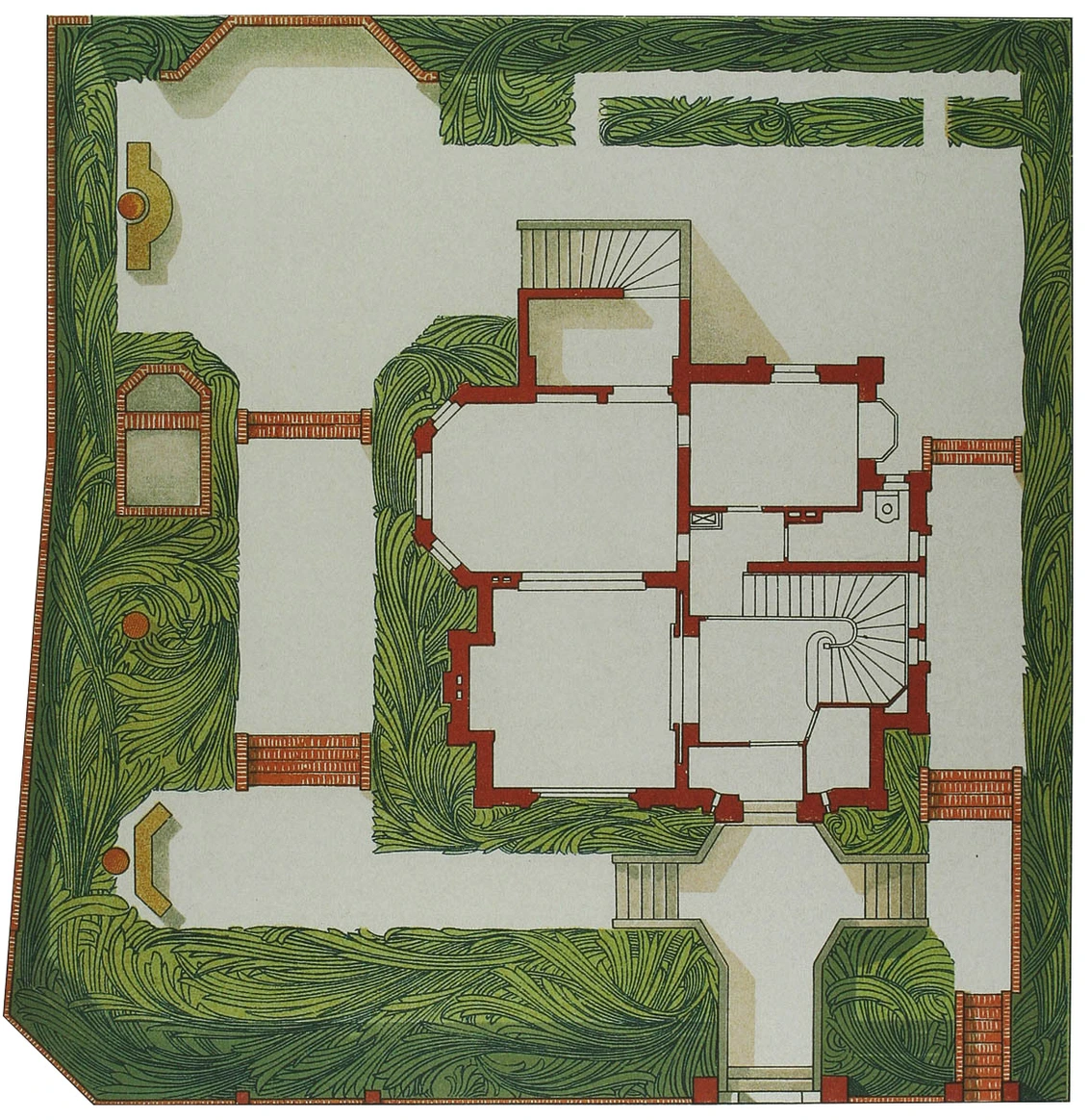
The plan of Behrens House
designed by peter behrens, 1901
The pages from the magazine deutsche kunst und dekoration, January 1902 issue,
with the publication “Peter Behrens House. The Essay On Art And Life" by kurt breysig
In Darmstadt, under the imprint of the artists’
colony, behrens wrote, set and published a manifesto of contemporary theater, feste der lebens und der kunst (1900). The book holds special significance for the history of graphic design. The title-page spread is a rare example for its time of the use of a sans-serif face.
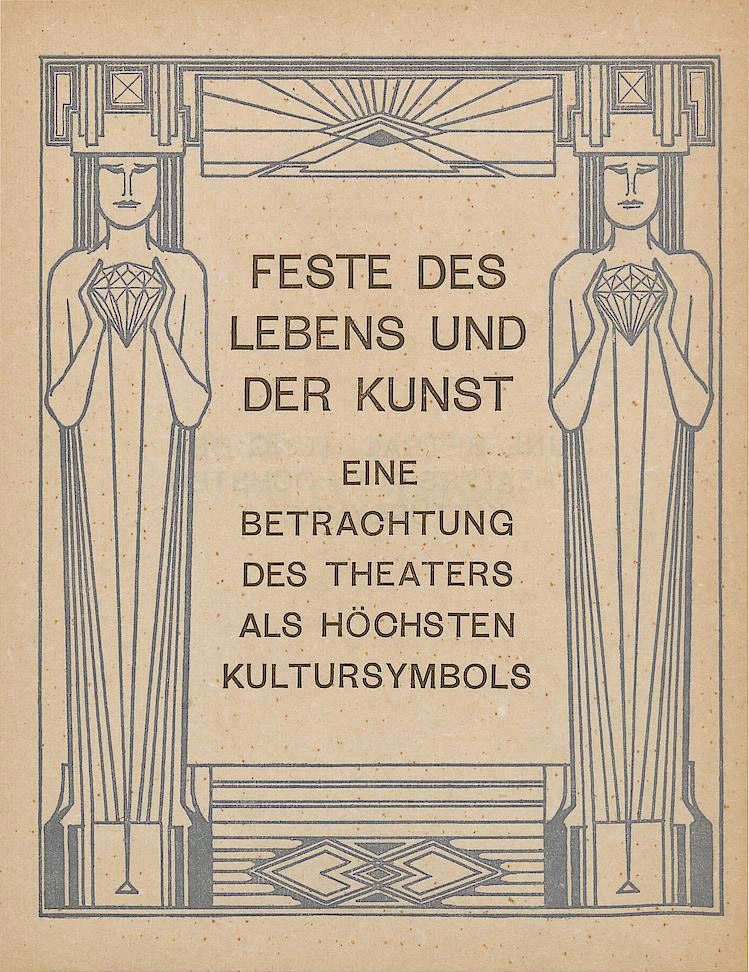
The cover and the title page of feste der lebens
und der kunst designed by peter behrens in 1900
behrens worked on the German pavilion for the
world exposition at Turin in 1902, designing the vestibule and furniture. The vestibule interior is the best example of behrens’ very recognizable early style, a personal version of art nouveau. Also shown at the Turin exposition was behrens’ design of a library for alexander koch, the publisher of deutsche kunst und dekoration.
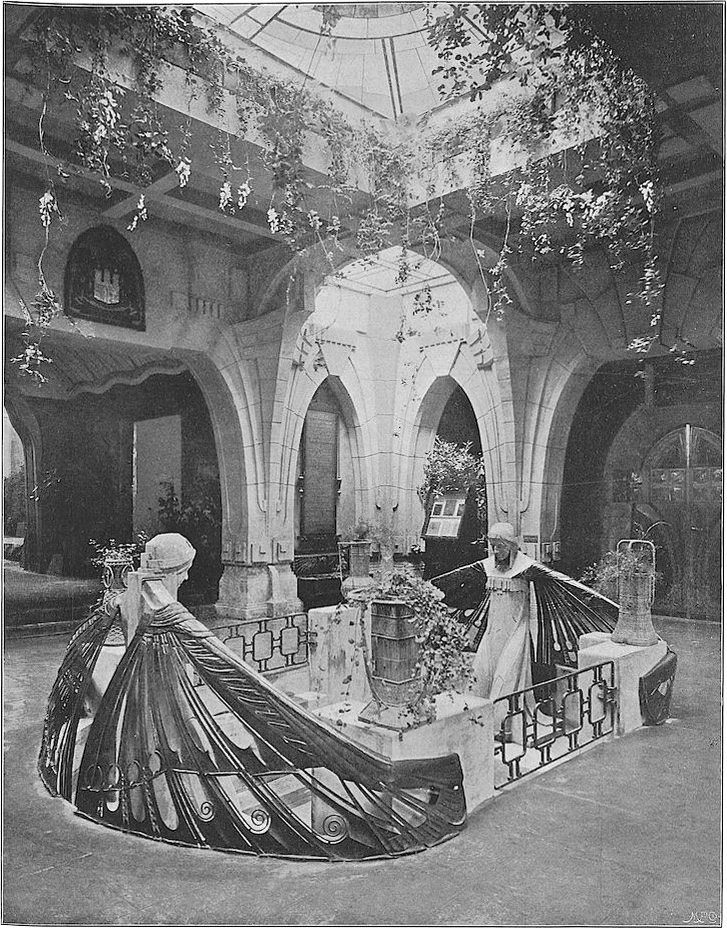
Hall in the German section at the international
exhibition of modern decorative art in Turin, 1902
